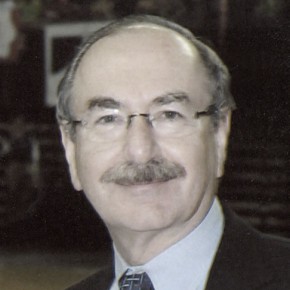 One chapter of my new book, Lincoln: The Fire of Genius, is called Institutionalizing Science. Much of the focus is on the Smithsonian Institution’s first Secretary, Joseph Henry, and his relationship with Abraham Lincoln. I am very happy that Marc Rothenberg, the former Editor of The Papers of Joseph Henry, as well as past Historian at the National Academy of Sciences, has provided the following praise for the book:
One chapter of my new book, Lincoln: The Fire of Genius, is called Institutionalizing Science. Much of the focus is on the Smithsonian Institution’s first Secretary, Joseph Henry, and his relationship with Abraham Lincoln. I am very happy that Marc Rothenberg, the former Editor of The Papers of Joseph Henry, as well as past Historian at the National Academy of Sciences, has provided the following praise for the book:
This is the first in-depth study of Abraham Lincoln’s interest in technology and science and how that interest impacted his life and his Presidency. This is not simply a biography. Drawing on his extensive research in both primary and secondary sources, Kent adds new nuance and context to our understanding of the place of technology and science in American culture in the antebellum period and during the Civil War. He presents Lincoln as a man of his times, aware of, and sensitive to, the technological innovations and scientific discoveries which were helping to shape modern America. Indeed, as Kent demonstrates, Lincoln was a catalyst for some of that transformation wrought by science and technology.
Rothenberg was Editor of the Joseph Henry Project for over 20 years and was on the Smithsonian staff for thirty. The project conducted a worldwide search for documents to supplement those already held by the Smithsonian, eventually obtaining documents from over 300 repositories in 17 nations. Overall, there were nearly 136,000 documents, all of which were computer indexed for searchability. Eleven printed volumes were issued. They became a valuable resource for my research of this book. Rothenberg clearly is an expert on Joseph Henry. After getting a bachelor’s degree in astronomy from Villanova, he received his PhD in History of Science from Bryn Mawr.
Once the Joseph Henry Project was complete, Rothenberg moved on to be historian at the National Academy of Sciences, another institution signed into existence by Abraham Lincoln, and which plays an important role in my Institutionalize Science chapter. I first met Rothenberg at a private club in Washington, DC, where he graciously treated me to lunch and gave me the benefit of his experience for over three hours. He read an early version of this chapter and provided valuable feedback, so it was a given that I would ask him to read the galley of the full book, after which he provided the above praise. A shorter version of his remarks will appear as a blurb on the back cover of the book when it is released on September 1st.
I’ve been honored to have received advanced praise not only from Rothenberg but from prominent Lincoln experts Harold Holzer and Michael Burlingame. Lincoln biographer and journalist Sidney Blumenthal wrote a wonderful foreword to the book. Click on the links to see what they said. And that isn’t all. Several other well-known Lincoln experts provided blurbs. I’ll talk about those in future posts.
 Release date for Lincoln: The Fire of Genius is September 1, 2022.
Release date for Lincoln: The Fire of Genius is September 1, 2022.
While you’re here, check out the various posts on Lincolnian.org related to our recent Lincoln Memorial Centennial program. For those who missed it, C-SPAN will be replaying the event at 3 pm on June 18th on CSPAN2.
The book is available for pre-order on the Rowman & Littlefield website (Lyons Press is a trade imprint of Rowman). You can also pre-order it on Amazon and Barnes and Noble (click on the respective links to pre-order). Release date is scheduled for September 1, 2022.
The book is also listed on Goodreads, the database where I keep track of my reading. Click on the “Want to Read” button to put it on your reading list. That will also ensure you get informed of the release date AND will let you try for one of ten free hardcover copies of the book that I’ll be giving away this summer. I’ll also be giving away as many as a hundred e-books. [The book will also be put out on audio]
You also follow my author page on Facebook.
I’ll have much more about the book over the next few months, so join my mailing list here to keep informed.
David J. Kent is President of the Lincoln Group of DC and the author of Lincoln: The Man Who Saved America. His previous books include Tesla: The Wizard of Electricity and Edison: The Inventor of the Modern World and two specialty e-books: Nikola Tesla: Renewable Energy Ahead of Its Time and Abraham Lincoln and Nikola Tesla: Connected by Fate.
Check out my Goodreads author page. While you’re at it, “Like” my Facebook author page for more updates!



 The Lincoln Memorial reaches its centennial this month and this past week was the culmination of a year’s worth of work to celebrate the iconic structure’s 100th birthday. Around this time last year, the Lincoln Group of DC, of which I am the current president, decided that we must have a magnificent event on the Memorial steps. We had done something similar in 2015 for the sesquicentennial of Abraham Lincoln’s second inaugural speech so we followed the basic format. There were differences of course. We couldn’t really have a Lincoln reenactor for a memorial to his life and death, especially since it wasn’t dedicated until 57 years after his assassination. We also couldn’t just recapture the Civil War theme, nor did we want to exactly recapture the segregationist Jim Crow-era time of 1922. Plus, we would be working with the National Park Service, which would prefer not to be overly controversial. Still, there were issues from that 1922 dedication we wanted to address and there has been 100 years of history we wanted to show.
The Lincoln Memorial reaches its centennial this month and this past week was the culmination of a year’s worth of work to celebrate the iconic structure’s 100th birthday. Around this time last year, the Lincoln Group of DC, of which I am the current president, decided that we must have a magnificent event on the Memorial steps. We had done something similar in 2015 for the sesquicentennial of Abraham Lincoln’s second inaugural speech so we followed the basic format. There were differences of course. We couldn’t really have a Lincoln reenactor for a memorial to his life and death, especially since it wasn’t dedicated until 57 years after his assassination. We also couldn’t just recapture the Civil War theme, nor did we want to exactly recapture the segregationist Jim Crow-era time of 1922. Plus, we would be working with the National Park Service, which would prefer not to be overly controversial. Still, there were issues from that 1922 dedication we wanted to address and there has been 100 years of history we wanted to show.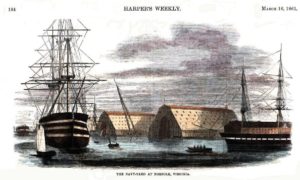 May 10, 1862 was a busy day for President Abraham Lincoln. He had arrived at Fortress Monroe days before and today, along with Secretaries Chase and Stanton, accompanied General Wool to a landing place where troops were preparing to march on Norfolk. Lincoln served as his own commanding general in Hampton Roads, directing and pushing for the taking of Norfolk and the Gosport Navy Yard in nearby Portsmouth. He even guided a landing party on Confederate-held soil in search of a spot for the Union Army to make their trek into the city as it was being abandoned by the Confederates. Following this excursion, Lincoln returned to Fortress Monroe and remained there the rest of the day.
May 10, 1862 was a busy day for President Abraham Lincoln. He had arrived at Fortress Monroe days before and today, along with Secretaries Chase and Stanton, accompanied General Wool to a landing place where troops were preparing to march on Norfolk. Lincoln served as his own commanding general in Hampton Roads, directing and pushing for the taking of Norfolk and the Gosport Navy Yard in nearby Portsmouth. He even guided a landing party on Confederate-held soil in search of a spot for the Union Army to make their trek into the city as it was being abandoned by the Confederates. Following this excursion, Lincoln returned to Fortress Monroe and remained there the rest of the day.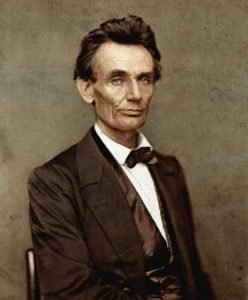 Abraham Lincoln once advised in the prosecution of Isaac Wyant, who had his arm amputated after being shot in a border dispute with Anson Rusk. Following his recovery, Wyant sought out and shot Rusk four times, then pleaded not guilty by reason of temporary insanity. Lincoln’s old friend Leonard Swett was on the side of the defense.
Abraham Lincoln once advised in the prosecution of Isaac Wyant, who had his arm amputated after being shot in a border dispute with Anson Rusk. Following his recovery, Wyant sought out and shot Rusk four times, then pleaded not guilty by reason of temporary insanity. Lincoln’s old friend Leonard Swett was on the side of the defense.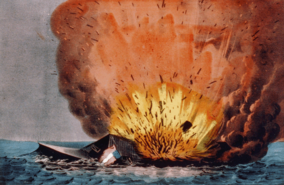 Abraham Lincoln spent much of his day on March 9, 1862 fretting over the battle of the ironclads. The Union ironclad Monitor had fought to a draw with the Confederate ironclad Virginia (former the USS Merrimack) at Hampton Roads, Virginia. The Virginia had been created from the burnt out hull of the Merrimack, left behind at Gosport Navy Yard at the beginning of the war after the state of Virginia seceded. The Merrimack was converted by the Confederate Navy into a seemingly indestructible metallic monster soon to prey on Union ships. Even though the ship was now officially the Virginia, the alliteration of Monitor and Merrimack (and the end of the Confederacy) means most people refer to the ship by its former name, both then and now.*
Abraham Lincoln spent much of his day on March 9, 1862 fretting over the battle of the ironclads. The Union ironclad Monitor had fought to a draw with the Confederate ironclad Virginia (former the USS Merrimack) at Hampton Roads, Virginia. The Virginia had been created from the burnt out hull of the Merrimack, left behind at Gosport Navy Yard at the beginning of the war after the state of Virginia seceded. The Merrimack was converted by the Confederate Navy into a seemingly indestructible metallic monster soon to prey on Union ships. Even though the ship was now officially the Virginia, the alliteration of Monitor and Merrimack (and the end of the Confederacy) means most people refer to the ship by its former name, both then and now.*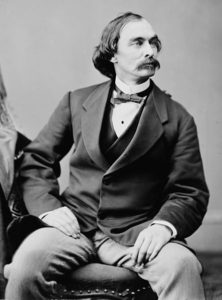 Abraham Lincoln had a knack for meeting Arctic explorers. On March 1, 1862, Lincoln wrote to Secretary of War Edwin Stanton:
Abraham Lincoln had a knack for meeting Arctic explorers. On March 1, 1862, Lincoln wrote to Secretary of War Edwin Stanton: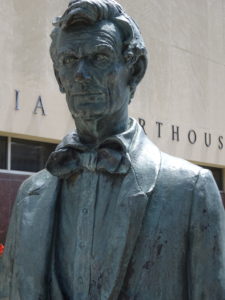 Abraham Lincoln accused Russia of being a place “where despotism can be taken pure,” openly dedicated to the exercise of absolute power and cruelly oppressive.
Abraham Lincoln accused Russia of being a place “where despotism can be taken pure,” openly dedicated to the exercise of absolute power and cruelly oppressive. Abraham Lincoln rejects gift of elephants from Siam by pointing out the advantages of steam power. Lincoln would promote many scientific and technological improvements in his lifetime and his presidency.
Abraham Lincoln rejects gift of elephants from Siam by pointing out the advantages of steam power. Lincoln would promote many scientific and technological improvements in his lifetime and his presidency. The year in a writer’s life actually went much more to plan than
The year in a writer’s life actually went much more to plan than 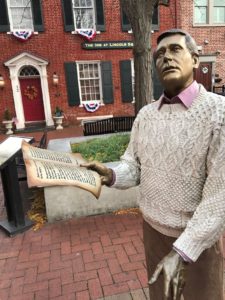 Last year I started off my
Last year I started off my 





